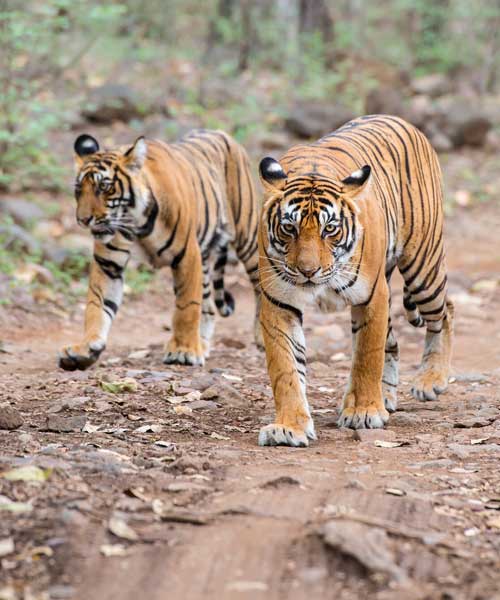Tag: Living alongside wildlife
Chester Zoo’s Andean Bear Project, developed and run in partnership with The University of Oxford’s Wildlife Conservation Research Unit (WildCRU) and Bolivian NGO Prometa, has won a prestigious Whitley Award.
Work supported by Chester Zoo to protect critically endangered Philippine cockatoos by employing former poachers as wardens is also being recognised at the ceremony taking place in London today (Thursday 18 May).
Run by the Whitley Fund for Nature, the international prize honours exceptional conservationists working in grassroots conservation projects in developing countries. The six winners were chosen from a total of 166 contenders from 66 countries.
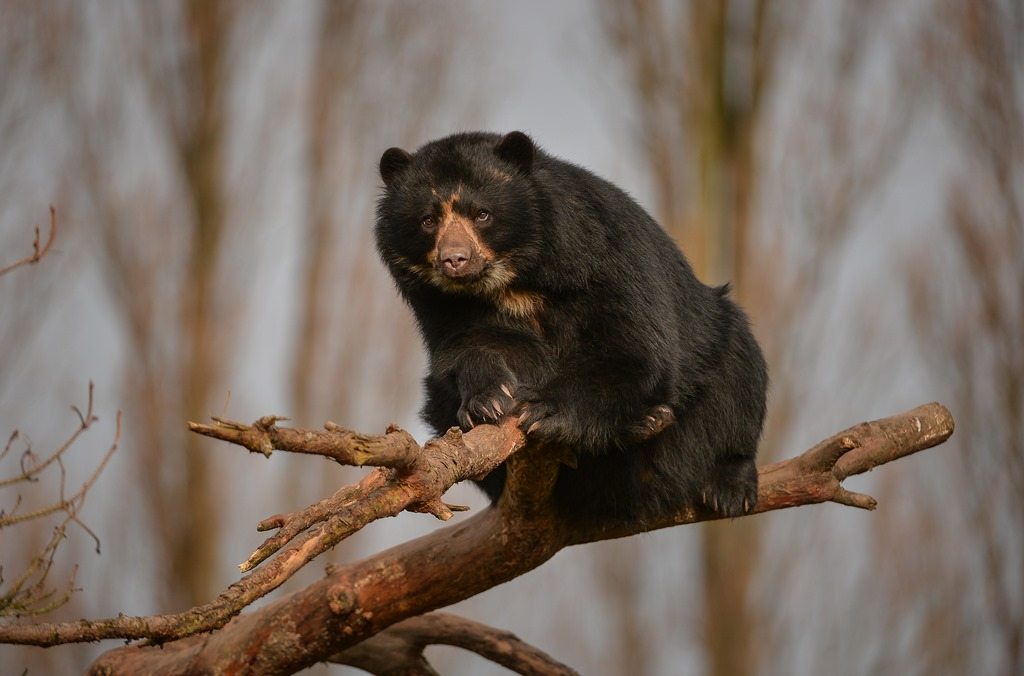
Dr Ximena Velez-Liendo, a Chester Zoo and WildCRU Conservation Fellow, is among this year’s winners with her project ‘An uphill climb: enabling coexistence of Andean bears and farmers in the Bolivian mountains’. Dr Ximena Velez-Liendo, Chester Zoo Conservation Fellow and Research Associate of WildCRU, said:
“Thanks to the Whitley Award, the funding will help us to get the research equipment we need to improve our understanding of the bears’ distribution and we will be able to work with more communities and expand our project.
I never imagined I would receive such an honour. The Whitley Awards are very prestigious and only the best of the best of conservation scientists receive them. It’s a dream come true!
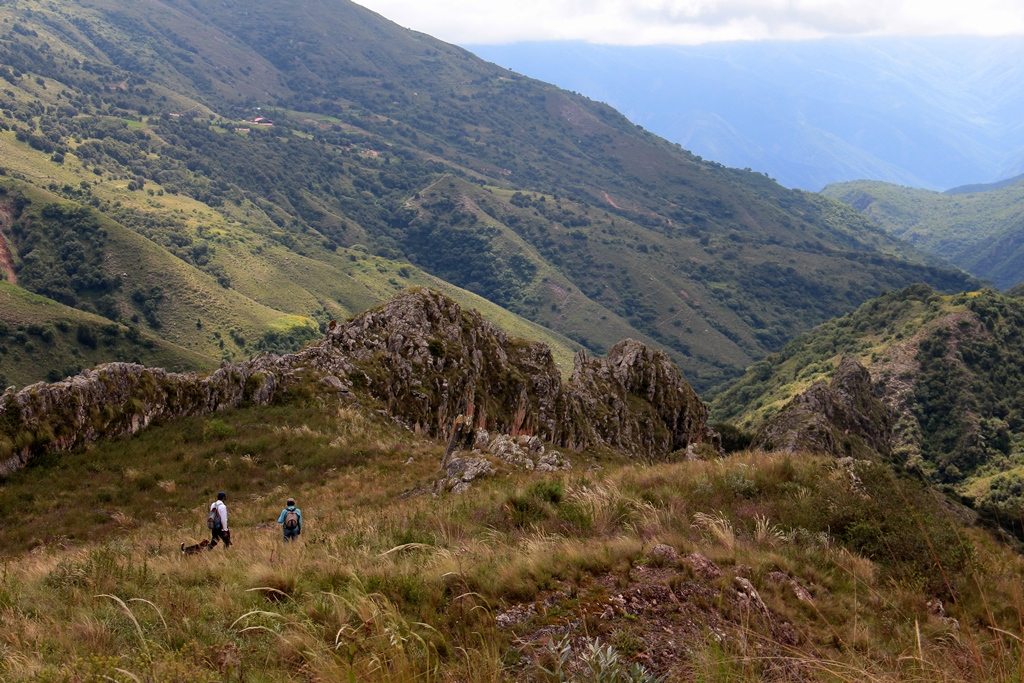
Earlier this year, we joined forces with WildCRU to deliver high-impact conservation research. This collaboration aims to provide new research to assist conservationists in developing innovative approaches to tackle global challenges such as human-wildlife conflict, livelihoods and sustainable development, and monitoring of populations of endangered species in the wild.
This project is key to our understanding of the human wildlife conflict facing Andean bears in their habitats in South America. This Whitley Award will provide the essential support we need to work with local communities, developing sustainable options for people to live alongside the species.
Indira Lacerna-Widmann, chief operating officer of the Katala Foundation, a Philippines-based organisation which successfully implemented the Philippine Cockatoo Conservation Programme (PCCP), is also among the prestigious winners with her project ‘Partnering with prisoners to safeguard the Critically Endangered Philippine cockatoo‘. Indira said:
“I am so grateful first to the cockatoos who remained resilient to fight against all odds over the years. This prestigious recognition I dedicate to all Filipinos but most esp to all Palaweños who take pride in conserving this beautiful bird. The Whitley Award will push our efforts to reach and engage more people in all walks of life – be it a prisoner in penal farm, a businessman, military personnel or anyone.”
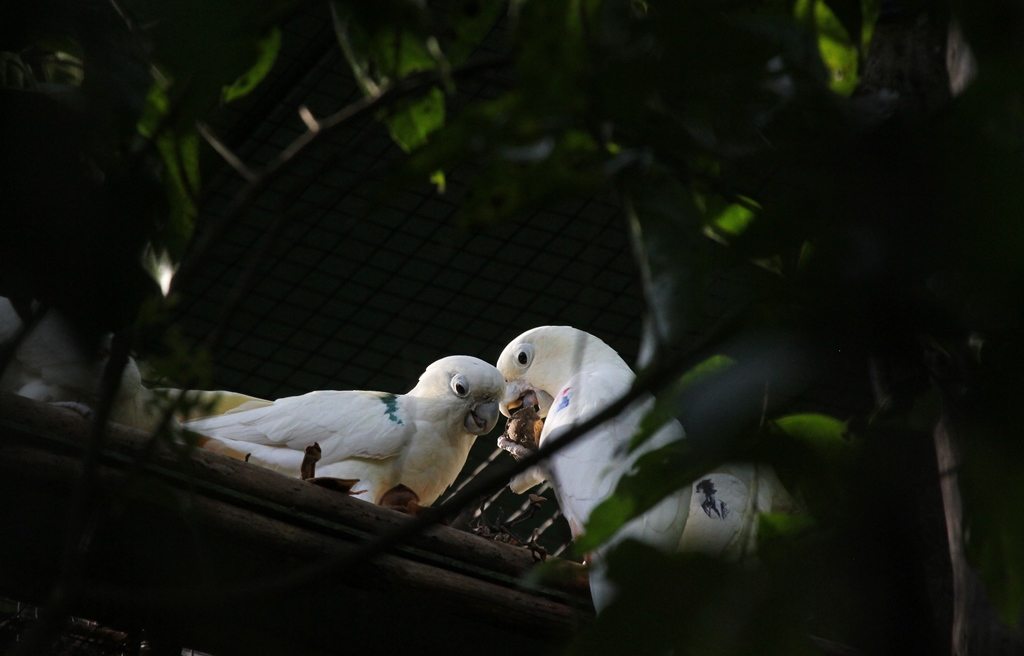
The participation of everyone is not an option; it is a must for things to happen!
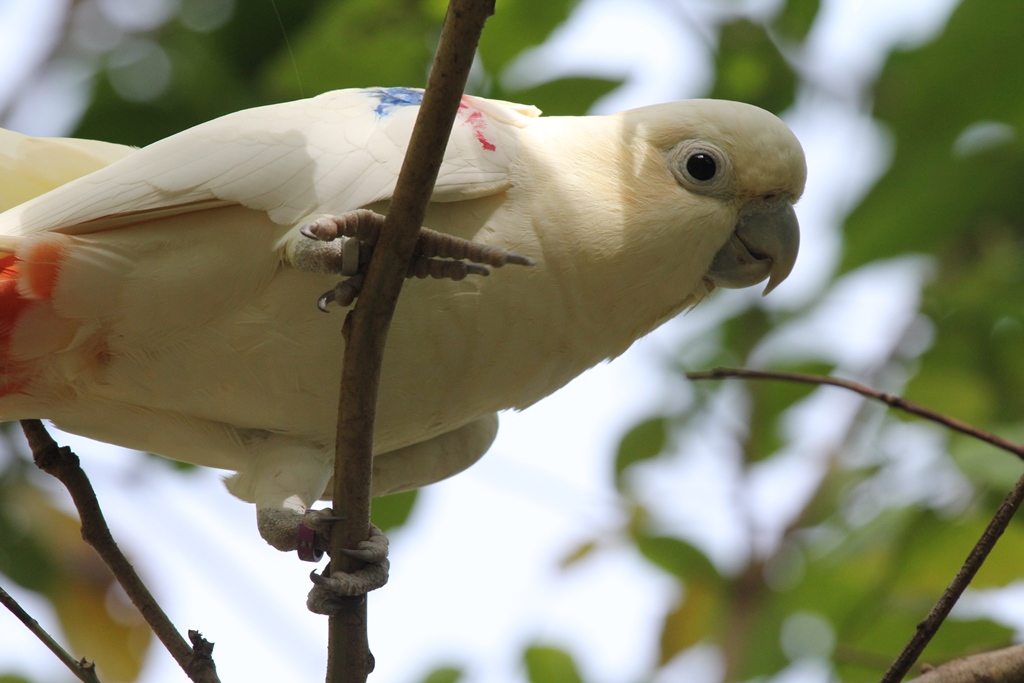
Run by the Whitley Fund for Nature, the international prize honours exceptional conservationists working in grassroots conservation projects in developing countries. The applicants are currently being assessed by a panel of judges for the chance to win an award and a prize of £35,000 to support the project over one year. The Whitley Awards Ceremony will be presented by HRH The Princess Royal at the Royal Geographical Society in London on Thursday 18 May.
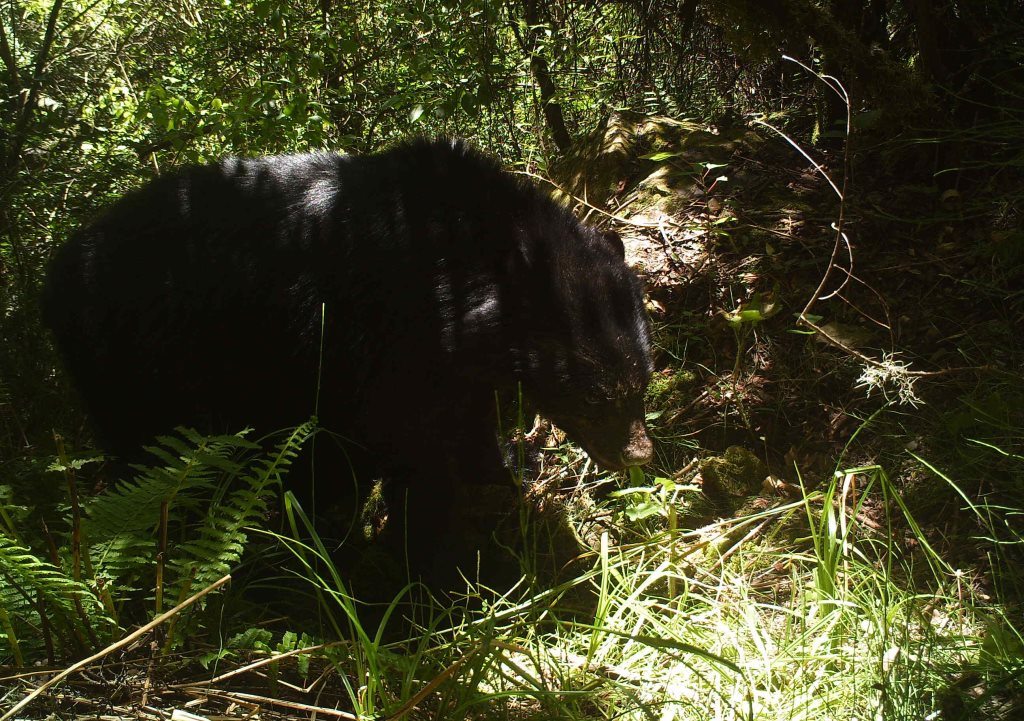
Previous winners include Chester Zoo project partners Arnaud Desbiez from the Giant Armadillo Conservation Project, Patricia Medici from the Lowland Tapir Conservation Initiative and Inza Koné from the Tanoé Forest project.
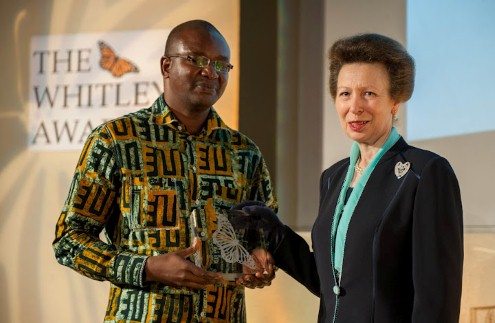
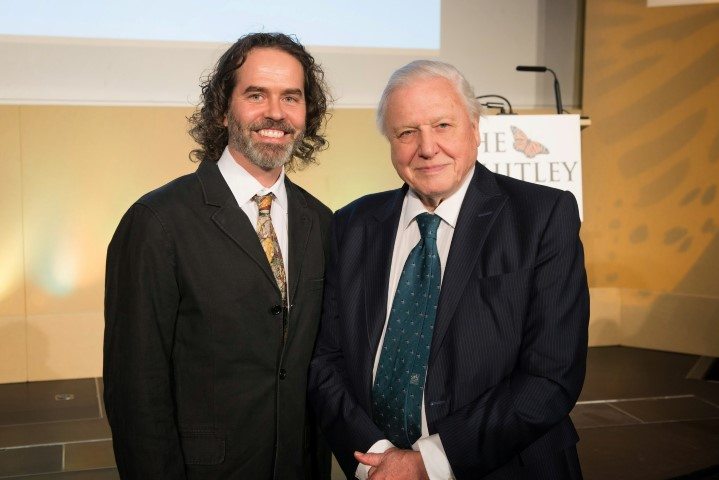
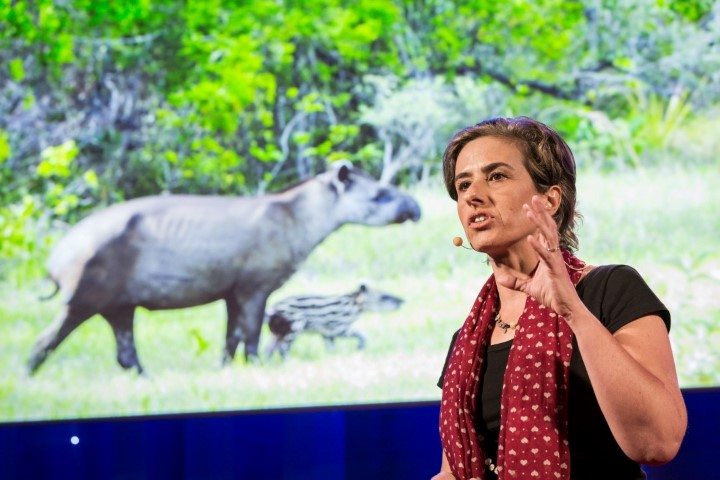
Chester Zoo’s recently launched Andean Bear joint project, run in partnership with WildCRU and Bolivian NGO Prometa, is among the finalists. Our conservation Fellow, Dr Ximena Velez-Liendo, is working towards understanding the level of human-bear conflicts while also monitoring the Andean bear (Tremarctos ornatus) presence and distribution in the Inter-Andean dry forests in Bolivia.
With severe droughts affecting the country’s agriculture production, people are shifting from agriculture to livestock-raising, which has led to an increase in encounters between local communities and bears.
Applying a cross disciplinary approach between both natural and social sciences, the project aims at developing practical interventions for immediate reduction in bear conflict, developing alternate livelihoods to local communities, and bringing positive change and monitoring the Andean bear populations.
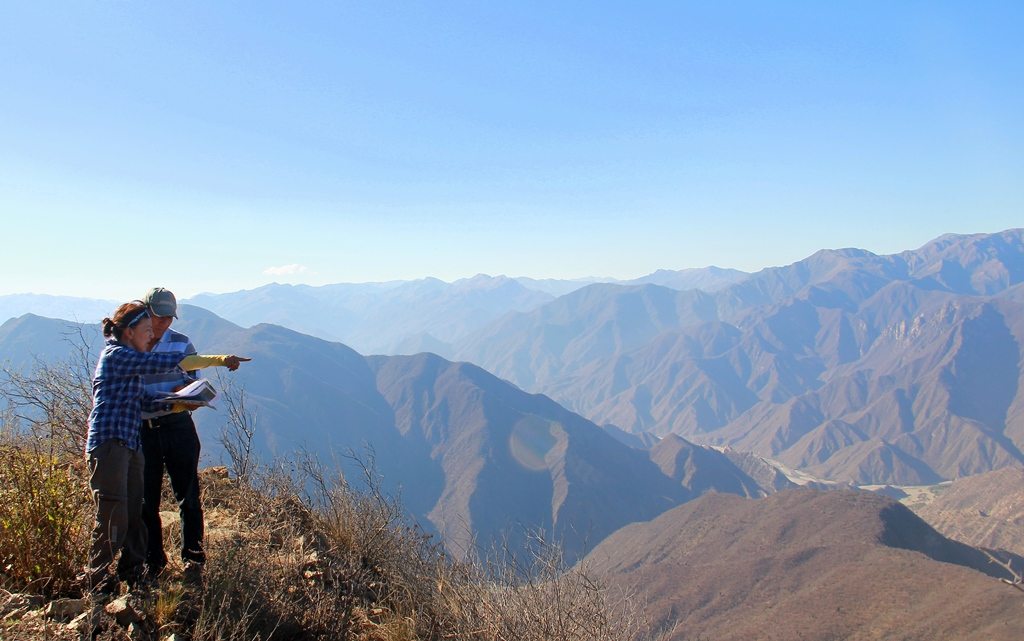
Indira Lacerna-Widmann, chief operating officer of the Katala Foundation, a Philippines-based organisation which successfully implemented the Philippine Cockatoo Conservation Programme (PCCP), is also among the prestigious finalists. Chester Zoo has been supporting the PCCP since 2003.
Restricted to lowland forest areas and mangroves, the Philippine Cockatoo (Cacatua haematuropygia) suffered a rapid decline in the last decade bringing the species to the brink of extinction. Employing former poachers as wardens, the foundation is playing a key role in conserving and restoring the most viable subpopulations of the endangered species and its habitat.
Working in five locations in Palawan, the Katala Foundation’s sites include a project in Iwahig Prison and Penal Farm (IPPF). The IPPF is surrounded by forest with high levels of biodiversity and the project is working with the staff and prisoners to monitor and protect the cockatoos and other wildlife.
Watch the below video from the Philippine Cockatoo Conservation Programme to find out more about the project and the work that’s going on to help protect this bird species:
Spanning 741 square kilometres with spectacular views of the stunning Mount Kilimanjaro is one of Kenya’s most beautiful National Parks, Chyulu Hills which sits within the Amboseli ecosystem. The Amboseli ecosystem spreads across the border of Kenya and Tanzania with many Maasai living on community owned land between the four National Parks within the ecosystem, many beautiful animals including elephants, giraffes, cheetahs and lions.
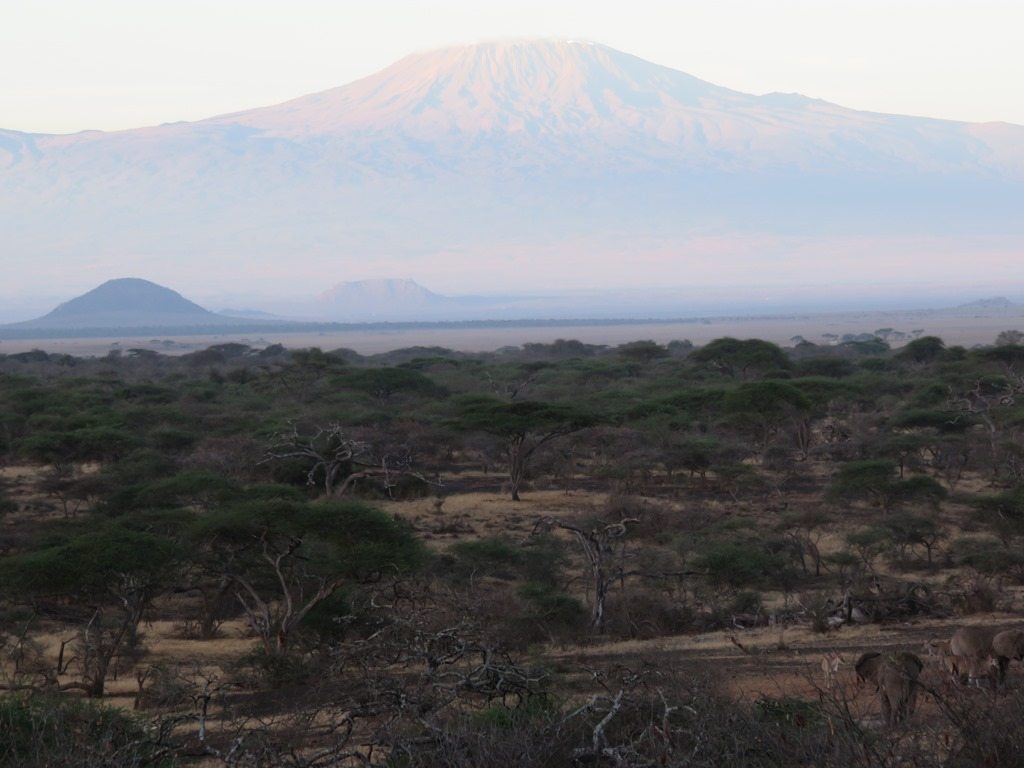
Over the past six years we’ve been working with Big Life Foundation to help them protect predators such as lions and hyenas throughout the Amboseli ecosystem. A large part of this protection requires Big Life to tackle human-animal conflict within the Maasai community. Big Life is working with local communities on a range of initiatives such as a predator protection programme and the Maasai Olympics to reduce the number of lion killings across the Amboseli.
Daniel Ole Sambu, predator protection programme coordinator for Big Life Foundation tells us more below:

What is Big Life Foundation doing to try and stop people killing predators?
“One thing we’ve done is start a predator protection programme in the Amboseli. Back in 2003, the lion population had been declining across the Amboseli ecosystem, due to retaliation killings from the Maasai warriors.
“The Maasai community, like any other community are affected by commercial and economic losses so if they are losing their only source of livelihood – the cows – to predators, they will kill them. The Maasai elders came to us with a possible solution to the problem after we asked them what would make them stop. They suggested that if we could pay them for their cows that were being killed by lions, then they could try and stop the warriors from spearing or poisoning lions. The programme has been very successful and just months after it started we found a sharp decline in lion killing.
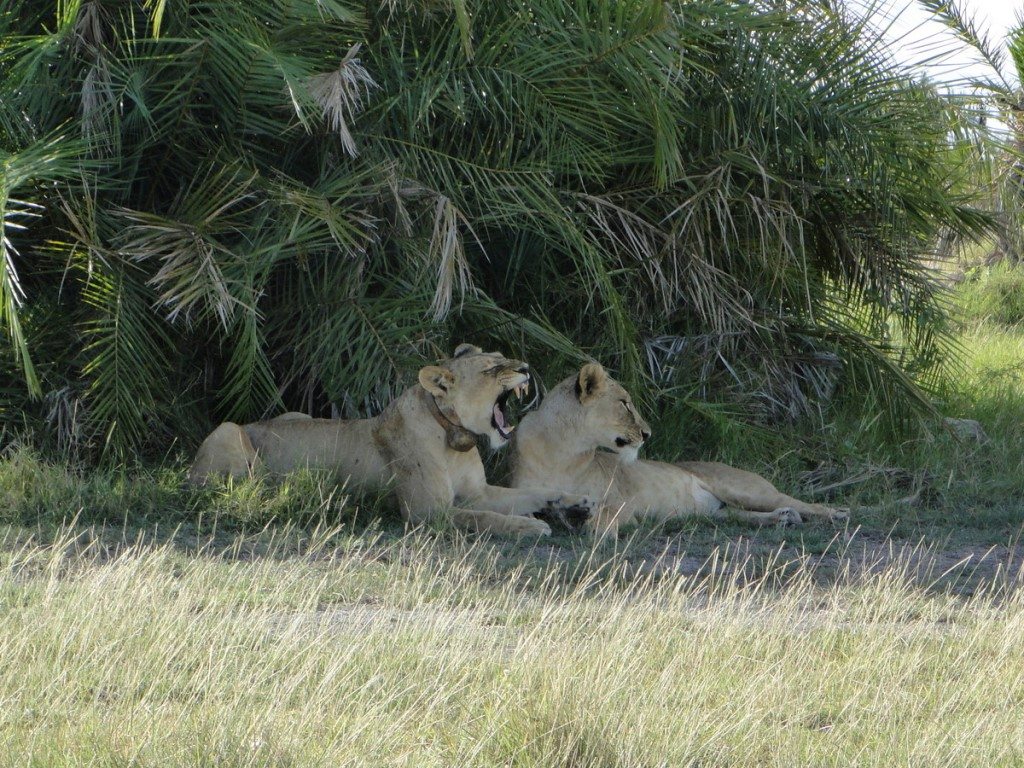
How important are the Maasai and the local village people in helping you to protect wildlife?
“The relationship between the Maasai community and Big Life Foundation is very good. We’ve let the community come to us and tell us how they want the programmes to be run and we’ve also put people from the Maasai community in charge. For example with one of our programmes we have an advisory board from the community. They take care of the governing, enforcing the rules and bringing the people in who may have killed lions, with Big Life Foundation playing a relatively small management role on the board.
Can you tell me a little bit about the Maasai Olympics and how it fits in with all the work of Big Life Foundation?
“We started the Olympics back in 2012 after we were approached by the Maasai elders, who realised that lions were still being killed due to a Maasai rite of passage. Their culture demands that every warrior in his lifetime should try to kill a lion, so they can show that they are brave, strong and most importantly so they can win girlfriends. After several meetings of negotiation they suggested we could find a way of making the young warriors very active and thus diverting their attention from lion killing. After looking around and observing other things that are happening around the world, we realised the only way we could keep them busy is through sport and as the Maasai are known to be very good at running, jumping and throwing spears, we decided to host our very own Maasai Olympics.
“Our first Maasai Olympics was held in 2012, just months after the Maasai, David Rudisha, won gold in 800m at the London Olympics! This was perfect and he kindly became our patron. The games were held at the base of Mount Kilimanjaro and featured individual athletic events – based on traditional warrior skills – such as 200m sprint, spear throwing and high jump. They were a great combination of conservation, culture and sport.”
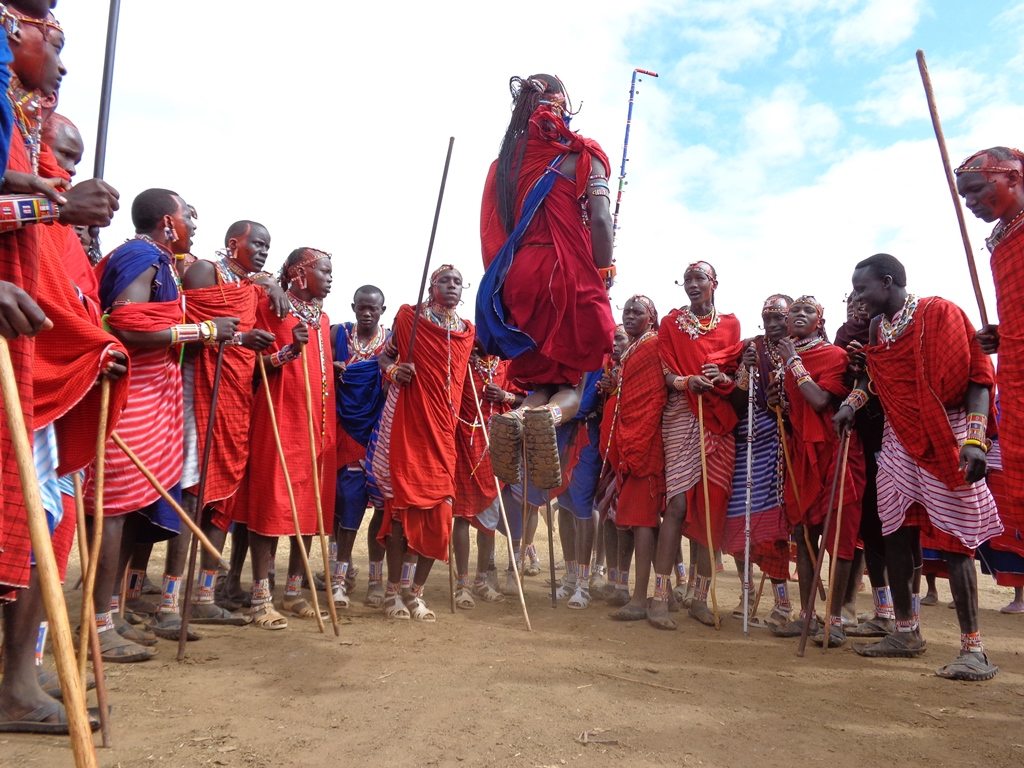
The Maasai Olympics is the culmination of a two year cycle of conservation education meetings. These education meetings encourage discussions on the importance of wildlife, specifically lions, and emphasise the benefits wildlife can bring. The combination of education, competition and compensation could be the winning formula for predator protection. The goal for the Big Life Foundation was to reduce lion killing to a sustainable level, which the compensation scheme and Maasai Olympics, in combination, have achieved.
For the third time Chester Zoo will be the main sponsor of the Maasai Olympics which are being held in December. Keep an eye on our blog for more updates from the games.
Coming face to face with the world’s largest reptilian isn’t everyone’s cup of tea, but Luke Evans has been studying this species for a number of years as part of his PhD and has managed to get pretty close to understand more about these incredible animals. Discover more about this crocodile project, supported by Chester Zoo, below:
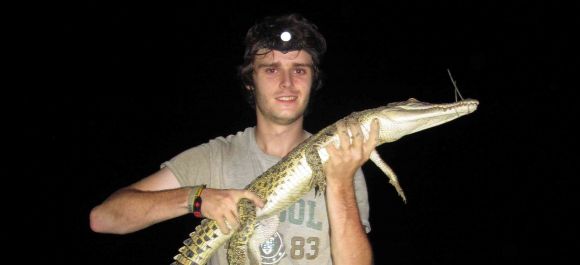
Saltwater, or estuarine, crocodiles can be found in rivers and swamps but with the increase in palm oil plantations, and other changes to the environment, their habitat has become quite fragmented. As a result of this the overall amounts of prey available for the crocodile species has decreased considerably, which has led to an increase in human-crocodile conflict in areas that are close to plantations.
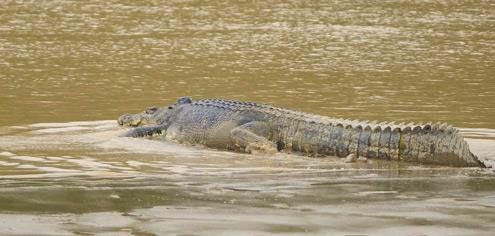
Luke Evans is studying crocodiles at Danau Girang Field Centre in Sabah and, to gather data for his research, has been learning to fly a conservation drone (a remote controlled plane) which has a digital camera attached to take photos of the landscape below.

Crocodile nests are often found in open areas as sunlight can help to regulate the internal nest temperature. This means that droning is the perfect way to find them as they can be seen easily from above!
Luke has been flying different missions in various areas of the Kinabatangan looking for evidence of crocodile nests. The first missions were a huge success and potential crocodile nests were found and investigated. This could not have been done without the help of the drone as the nests are often found in swampy areas with high vegetation, so could not be seen from ground level unless you knew where to look!
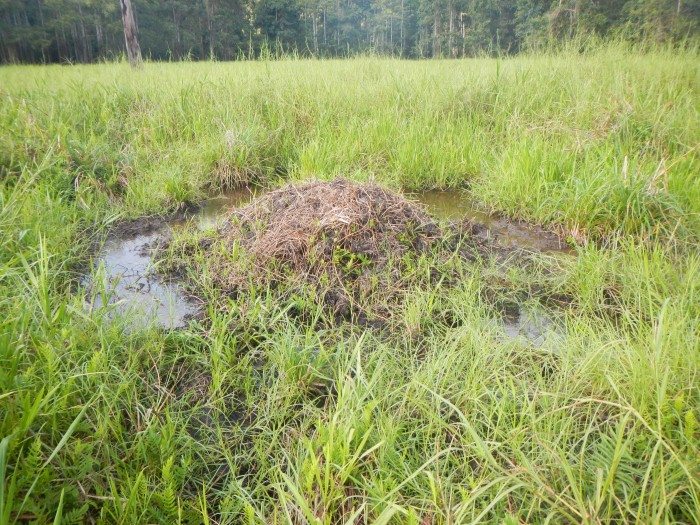
The first site that was investigated was a crocodile nest, and a video camera trap was set up near it to try and catch the mother crocodile returning. But unfortunately there were no signs of her returning.
Not only does the drone help us find crocodile nests, the pictures can also be stitched together and create an up-to-date image of the landscape below, allowing views of the areas along the Kinabatangan river which can be used for multiple conservation projects. Luke’s research aims to find out how the changing landscape, as a result of the increase in palm oil plantations, in this region is impacting the nesting behaviours of the saltwater crocodile.
The results from the research Luke and the team carried out have recently been published, which can be found here.
The drones the team used improved on previous research techniques and enabled them to pin-point and map crocodile nesting sites. This mapping can help to prevent human-wildlife conflict with the crocodiles in areas where their habitat has become increasingly fragmented by oil palm plantations and their nests are close to local villages.
Luke’s research also discovered that the female saltwater crocodiles don’t seem to re-use their nest from one year to the next, suggesting that they either don’t nest on an annual basis or actually search for new sites each year – or both could be true, every time a female nests she chooses a new site.
Photo credit: Sabah Wildlife Department / Danau Girang Field Centre
The new task force – the first of its kind to focus on human-wildlife conflict – will bring together leading experts to provide guidance and specialist support to address the issue worldwide.
Human-wildlife conflict arises when animals pose a direct and recurring threat to the livelihood or safety of people which results in the persecution of that species. It affects most large carnivores, elephants, pigs, primates, sharks, seals, birds of prey, crocodiles and rhinos, amongst many others.
People retaliating against animals that pose a threat to their community has already led to the extinction of several species and is responsible for huge population declines of many more, including bears, lynx and cheetahs.
Chester Zoo’s Head of Conservation Science and expert in human-wildlife conflict, Dr Alexandra Zimmermann, will chair the new task force, having spearheaded a number of research and conservation programmes on this topic around the world over the past two decades.
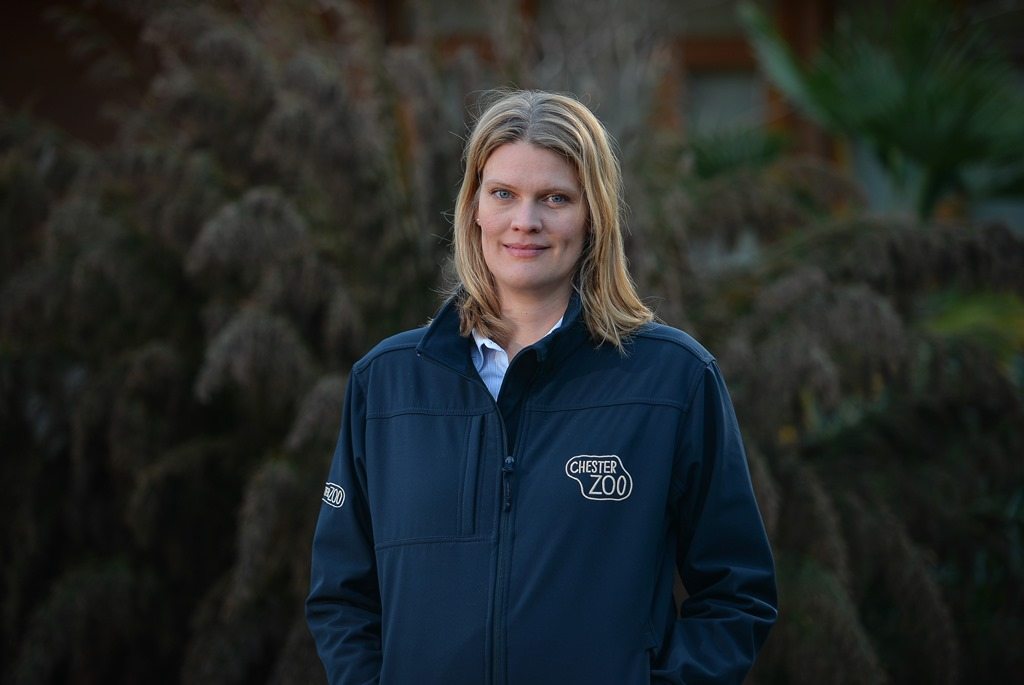
Dr Zimmermann said:
“There are immense challenges in addressing the problem of human-wildlife conflict around the world. The cultural, political and economic aspects at the root of these conflicts are often very complex and poorly understood. These conflicts can severely impact the security and wellbeing of the people of whom we ask for support for conservation.
“Mitigating human-wildlife conflict needs the collaboration of specialists from a range of different fields, so the experts serving on this task force will include not only biologists, but also for example social scientists, economists, anthropologists, social psychologists, peacebuilding experts, political ecologists, and specialists in poverty alleviation.”
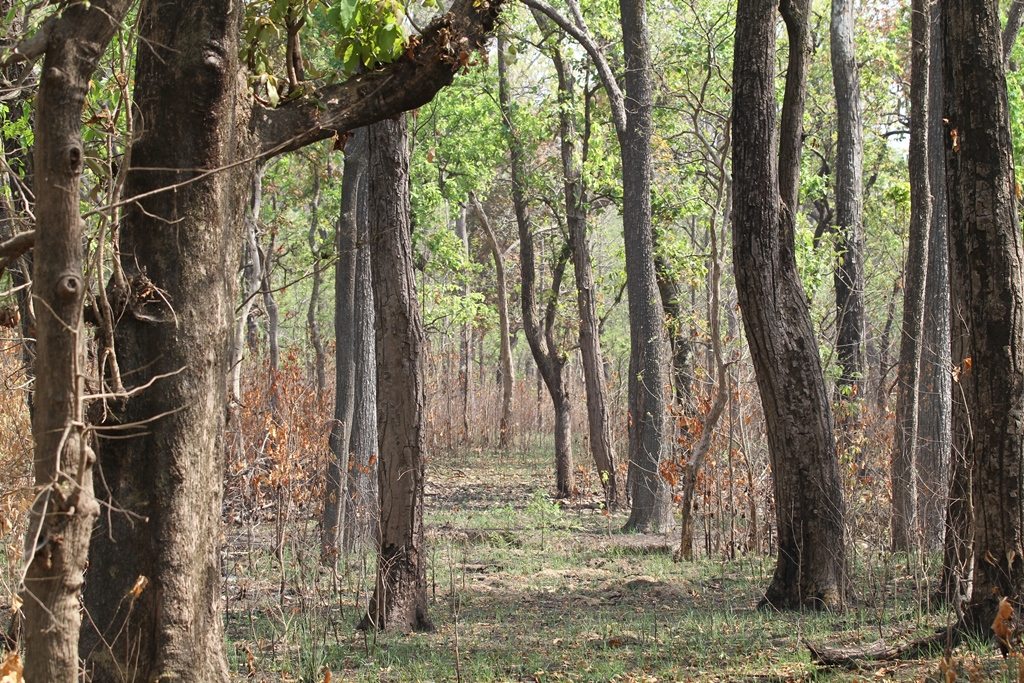
Dr Simon Stuart, Chair of the IUCN Species Survival Commission said:
“Human-wildlife conflict is among the most serious threats to many species around the world. Communities that can safely share landscapes with wildlife are essential for the future of conservation, but achieving this requires a truly interdisciplinary approach. The SSC’s new Task Force will bring together such a range of international expertise, so that we can begin to tackle the conflict challenge at a global scale and support species conservation around the world.”
Chester Zoo has been actively working on human-wildlife conflict around the world for over a decade.
Together with partner organisation Ecosystems-India, the zoo has tackled human-elephant conflict in Assam, India, dramatically reducing crop-raiding, keeping elephants and people safe from each other, while helping around 75 villages and over 600 people support conservation and develop new sources of sustainable income.
In the Terai of Nepal, where human-tiger conflict is threatening to undermine the tiger population increase the country has achieved, Chester Zoo is working with Green Governance Nepal to ensure the safety of 1200 families from poor communities living in close proximity to tigers at the edges of national parks.
Meanwhile, together the Wildlife Research Conservation Unit of Oxford University, the zoo has recently completed the largest study of human-jaguar conflicts across Latin America and is also currently developing scientific research and human-wildlife conflict initiatives for jaguars in Brazil and Andean bears in Bolivia.
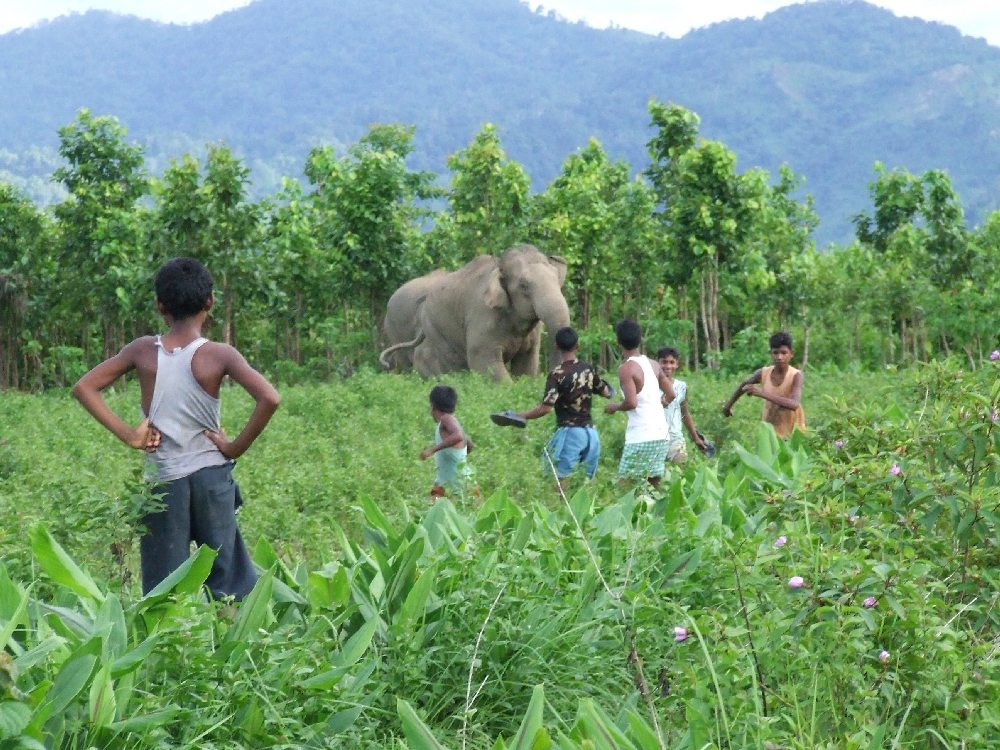
Elephants are in competition with people for space and unfortunately this has led to human-elephant conflict which is a major threat to the future of elephants in Asia.
Together with our partners we started the Assam Haathi Project which reduces human-wildlife conflict through working closely with the local communities.
As it’s World Elephant Day (12 August) we wanted to tell you more about the work we’re doing in Assam to protect the magnificent Asian elephant. Watch the below film to find out more:
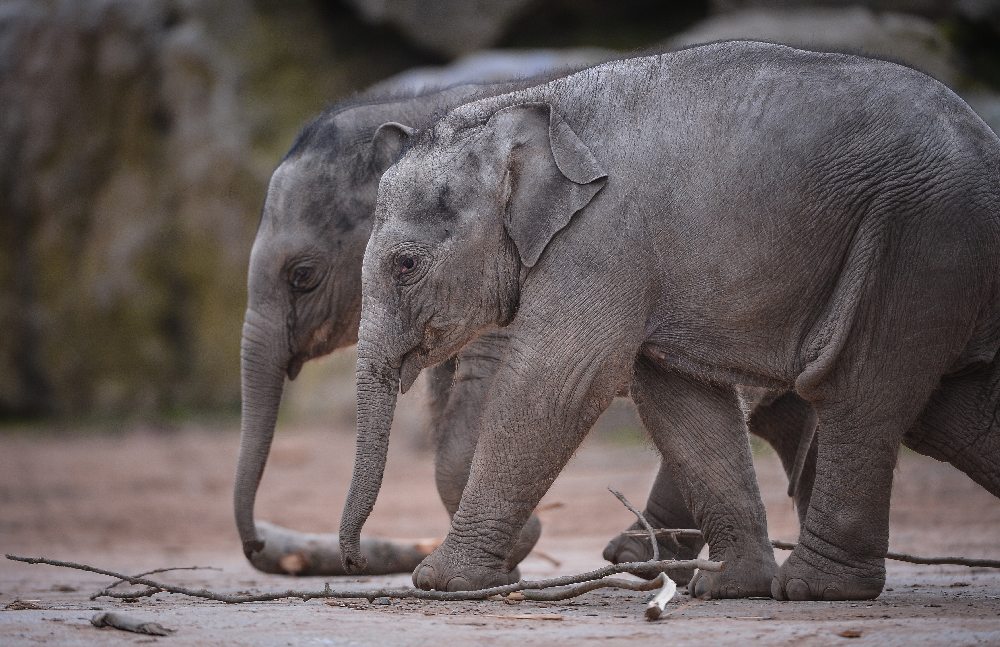
Asian Elephants need your help
“We visited two schools in the Managbe and Moramanga area-a few hours east from Madagascar’s capital city and the home of the endemic and increasingly rare golden mantella frog-to meet the communities living alongside them.
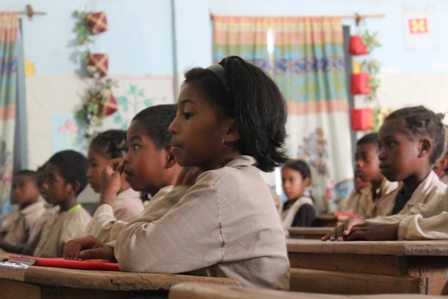
“Having very few public zoo’s in Madagascar most of the children and possibly some of the adults too-had never been to a zoo or even heard of one; so a key aim of our visits to the schools was to let them know about Chester Zoo-what we do and how we Act for Wildlife worldwide-as well as telling them why we were so interested in the amazing endemic wildlife on their doorstep.
“We were received with a wonderfully warm welcome; there was lots of excitement-but even bursting with excitement the children were so well behaved-polite and full of brilliant questions! Having come all the way from England to Madagascar to see some little bright orange frogs may seem a bit strange to the children that see those frogs in the forest near their homes regularly and so we did an activity to highlight the rarity of the golden mantella and why it’s important to look after their environment.
“We hid toy frogs around their playground and the children had to pretend to be the researchers-find the frogs-then with the Chester Zoo team-weigh-measure and count the frogs-as researchers would out in the field. The children then had to choose a suitable habitat to return the frogs to from a choice of healthy forest and degraded forest habitat images.
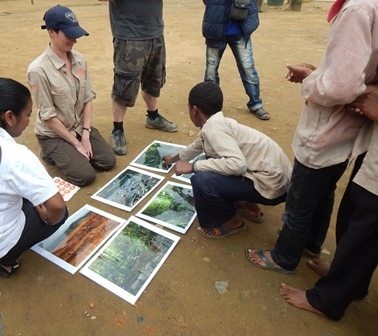
“The activity went really well with the help from Madagasikara Voakajy translators most of the children understood the importance of a healthy forest for supporting wildlife and people too. The local community celebrated our visit with a cultural exchange festival-where we were presented with wonderful poems-songs and dances; it was lovely to be so welcomed!
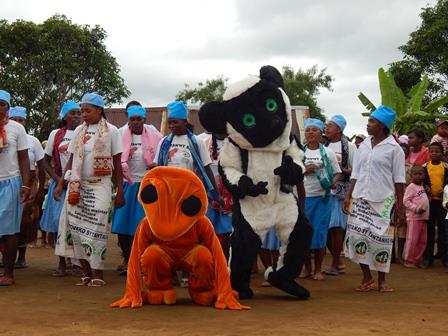
“The local women’s institute groups sang for us and were dressed in clothing embroidered with golden mantella frogs. We even got to buy some of their amazing animal embroidered pieces.
“As well as engaging with school and community groups I got be a part of the primate-bird and frog surveys. I love birds and so topped up on my Malagasy bird identification skills before the trip-so I could help identify birds on the surveys. I was super excited about going on the expedition and really enjoyed getting all my travel essentials together from mosquito net to plasters and emergency sweets. My most important pieces of kit were my binoculars and camera-for capturing incredible wildlife encounters and recording our findings.
“The forest was beautiful and full of life-from lemurs and birds to amazing-bizarre insects like the giraffe-necked weevil. I really enjoyed the night walks-watching mouse lemurs feeding in the trees-awesome snakes and chameleons asleep on the ends of branches. My favourite wildlife encounter was the sighting of our first wild Indri! Their song is a weird but incredibly beautiful mixture between a whale and gibbon call and it fills the forest with music for miles around.
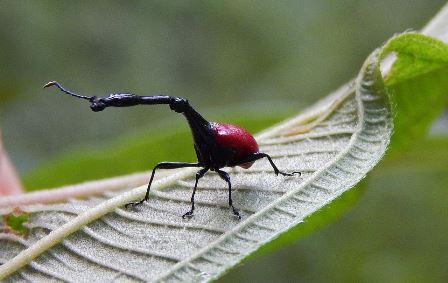
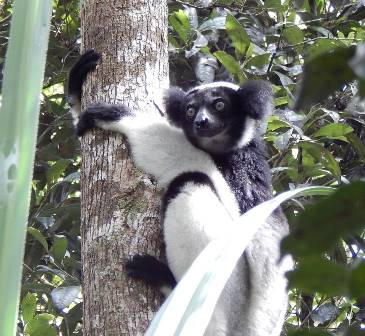
“One of the most exciting-strange and cringe worthy parts of the trip was getting jiggers – which are burrowing sand fleas – in my feet. The whole team had them-totalling over 80 altogether. What an experience?! That’s what I call team bonding!
“The work that Chester Zoo does-together with Madagasikara Voakajy-is really important because it’s helping to protect precious forests in a unique islands ecosystem-teaming with hundreds of endemic and threated animals and plants.
“The skills and support Chester Zoo has worked with Madagasikara Voakajy to develop are invaluable to protecting the wildlife-and the livelihood of the local people. The conservation work-community engagement and training that the zoo delivers with the support of its conservation partners-helps to provide the local people with education-jobs and the groundwork for a more sustainable future living alongside wildlife.
“The education element of the programme aims to inspire and connect the local people with wildlife because without their support and cooperation the conservation efforts to protect the golden mantella and other wildlife wouldn’t be possible. Madagasikara Voakajy do an amazing job of engaging and inspiring the local community to be advocates for the protection of their environment and it was incredible to be a small part of that whilst visiting the project.
“The expedition was an absolutely incredible experience-I saw weird and wonderful wildlife-made fantastic friends and got to be a part of the amazing conservation work to protect the golden mantella and its habitat.”
In 2015, Helena Stokes was awarded a studentship grant to support her research work in Sri Lanka. Like our Assam Haathi Project, Helena’s work focused on the Asian elephant – particularly those orphaned as a result of human-wildlife conflict. A year later, she’s been in touch to tell us how her project went and how she used the funding.
“I’ve just completed my masters’ course in Wild Animal Biology, a course run by the Zoological Society of London (ZSL) and the Royal Veterinary College (RVC).
“For my final research project, I studied the nocturnal behaviour of a large group of orphaned Asian elephant calves at a rehabilitation centre in southern Sri Lanka. Chester Zoo helped to fund my field research in Sri Lanka, including the camera equipment I needed for my research.
“Elephants are a highly intelligent social species, which makes studying their behaviour really interesting, and understanding more about a species’ behaviour may also help us to manage them well in captivity.
“Human-elephant conflict is a big problem in Sri Lanka, resulting in many calves becoming orphaned. This is why there is a need for rehabilitation centres such as the Elephant Transit Home, Udawalawe, where I carried out my research. My study focused on a large group of 34 calves, which are fed milk every four hours but spend the majority of time free-ranging in the nearby national park.
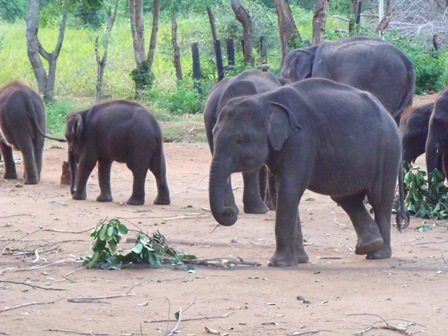
“The night behaviour of elephants has been little studied before – there are the obvious difficulties of visibility, especially in the field! The majority of previous studies have been carried out in zoos, whereas this orphaned study group may share similarities in behaviour with both captive and wild elephants, due to their free-ranging conditions.
“My aims were to build up a basic nocturnal activity budget for the calves, to compare different ages of calves, and also to look for signs of any stereotypic behaviour. Stereotypic behaviour describes repetitive behaviour patterns which have no obvious function, such as swaying and pacing. These are rarely seen in wild elephants, but have often been seen in captive elephants. They are sometimes suggested a possible indicator of poor welfare, so I wanted to investigate whether these orphaned calves also showed signs of this.
“Of course, every field trip has its challenges, and not everything went smoothly. We had many issues with our equipment. The original cameras we bought weren’t powerful enough, so I had to change my research plan – instead of downloading CCTV camera data each day, I observed the calves the old fashioned way, sitting up at night with a head torch and an infra-red video recorder! There were also more surprising dilemmas, such as an elephant trampling and breaking one of the cameras, and managing to mistake a rock for a sleeping elephant for three hours…!
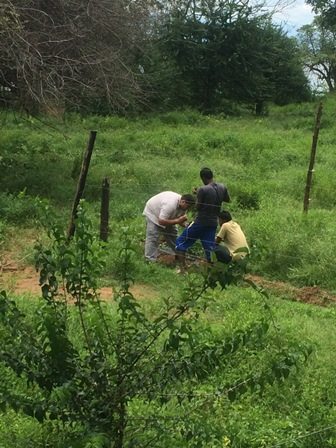
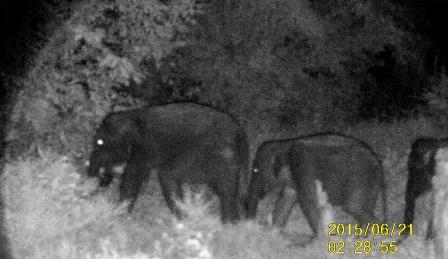
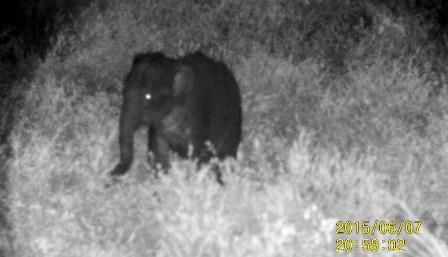
“After weeks of hard work and study I had 53 hours and 5 minutes of video to analyse. Unsurprisingly, the most common behaviours observed were resting and feeding. My main other findings were that the calves spent more time in lying rest compared to adult elephants and they appear to have synchronised sleeping patterns – once one elephant lay down, the others shortly followed. I also found that younger calves spend more time in close proximity to the rest of the group, suggesting that calves increase in confidence and exploratory behaviour as they grow older. Finally, I found no evidence of stereotypic behaviour in the group, which may suggest that welfare is good, although the link between stereotypic behaviour and welfare is still much debated.
“Whilst this is still a fairly new area of research, what I observed suggests that this orphaned group of elephant calves are exhibiting similar behaviour to what is known of wild elephant behaviour. This is good news – it means that hopefully these calves have a good chance of survival when they are mature and fit enough to be released into the wild.
“I wish I could have stayed in Sri Lanka for longer to study the elephants further and watch how their behaviour changes as they get older.
“I’d like to say a huge thanks to Chester Zoo. Thanks also to the Universities Federation for Animal Welfare (UFAW) for their financial support, and to my project supervisors Dr. Vijitha Perera, Dr. Ayona Silva-Fletcher and Dr. Nilmini Jayasena, for their input and advice. Finally, none of this would have been possible without the help and assistance (and torches!) from all staff at the Elephant Transit Home, Udawalawe, Sri Lanka.”
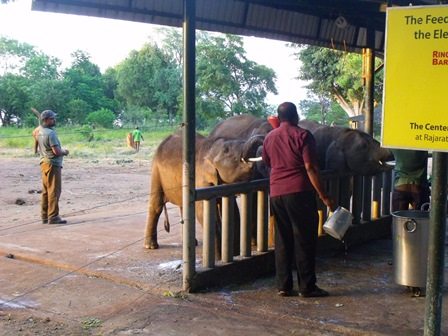
Winter
We kick started the year by celebrating five years of our Biodiversity Trainee scheme; a project we’re all very proud of and which saw us train 12 future conservationists in a range of skills needed to preserve UK wildlife. The participants were trained in a huge range of topics-from wildlife recording to fundraising-and public engagement to habitat management – and everything in between. The project was run in partnership with RECORD and Cheshire Wildlife Trust-and was made possible thanks to generous funding from Heritage Lottery Fund.

A team of zoo staff took part in an expedition to Assam in North East India where they spent time working with our Assam Haathi Project. The project has been working to reduce human-elephant conflict for over ten years; together with local communities we have implemented a range of methods to help keep elephants and people from harm.
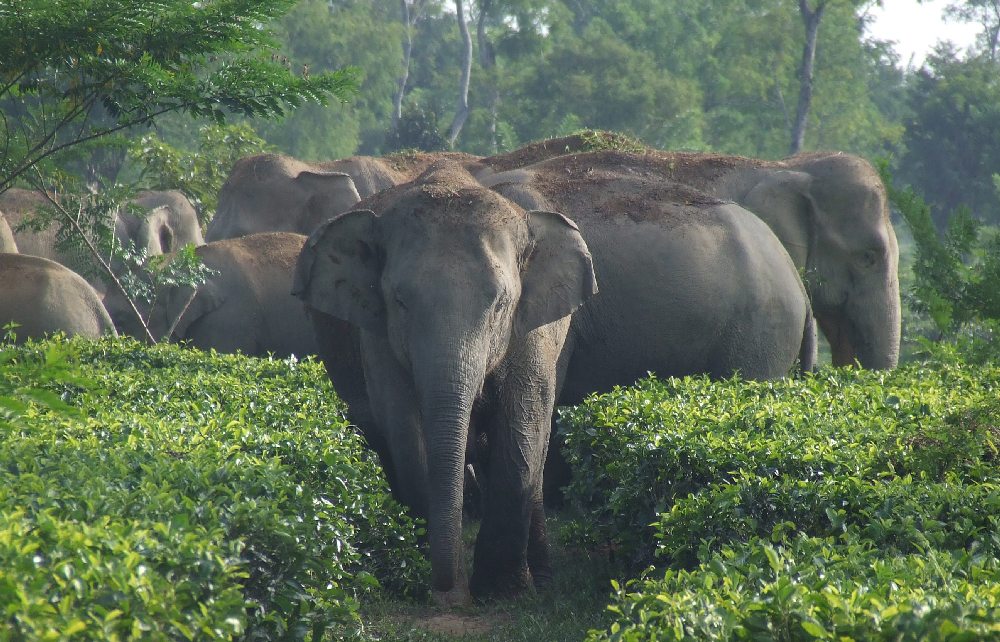
It was non-stop for the group as they travelled from village to village working closely with a number of villages. If they weren’t sharing their knowledge and skills in a workshop-they were volunteering their support in general maintenance and construction or providing support to long-term strategies for elephant conservation in this area.
Spring
We were thrilled to announce our new Living with Tigers project which-as the name suggests-aims to protect tigers and help the local communities live safely alongside them. Despite the fantastic news that tiger numbers are increasing as a result of the conservation efforts-this development brought with it a new challenge: human-tiger conflict. We recognised a need for support and are now currently establishing a team in Nepal who can work with the local villages to reduce the risk of tiger attacks. Read more updates from our Living with Tigers project-here.
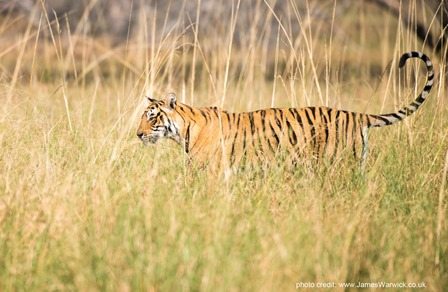
Back in Chester-as the warmer weather arrived we celebrated our changing seasons and the wonderful animals and plants we have right here in the UK. We also conducted our own BioBlitz – which saw a team of around 30 professionals count and identify as many species as possible in and around the zoo – all within 24 hours! Some of the highlights included exceeding our 500 species target-recording over 50 species of mosses and lichens and using new technology to record seven bat species.
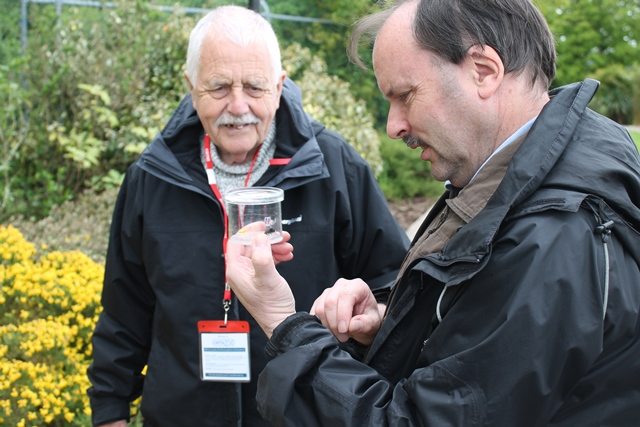
Summer
We received some devastating news from our project partners the Katala Foundation-in the Philippines-that over 4,000 turtles were confiscated from a convoy on its way to China. We sent out an emergency appeal to send resources to the team who were working around the clock to save as many turtles as possible. Thanks to the AMAZING response from you-our wonderful supporters-they were able to treat and release almost all of the animals!
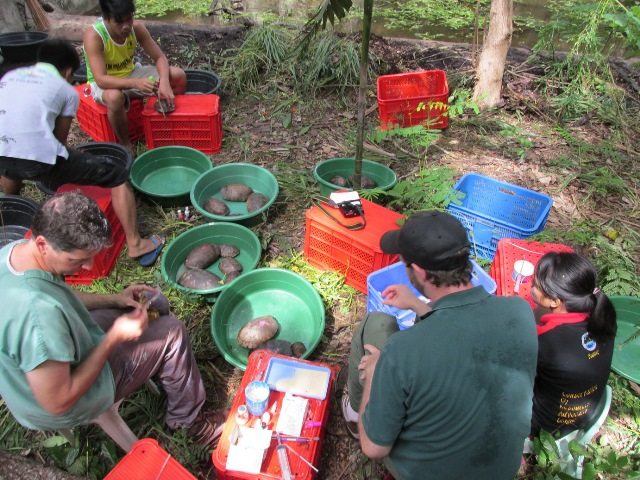
Those that weren’t ready for release are being rehabilitated at the Katala Foundation-who sent us this message:
“Without the generous support-immediate action-moral support and great dedication of all of you-we would not have been able to manage this crisis. But now-I believe we can proudly say ‘a crisis well managed’. Congratulations and Kudos. Thank you so much!”
We were also flying high after being recognised for the work we do to protect highly threatened bird species. The British and Irish Association of Zoos and Aquariums (BIAZA) created a list of the top ten birds benefiting from conservation and breeding programmes at zoos and aquariums in the UK. We are home to six of the species that were on the list and play a significant role in supporting and protecting endangered birds on the brink of extinction – not just here at the zoo but also through the vital work we do in the wild.
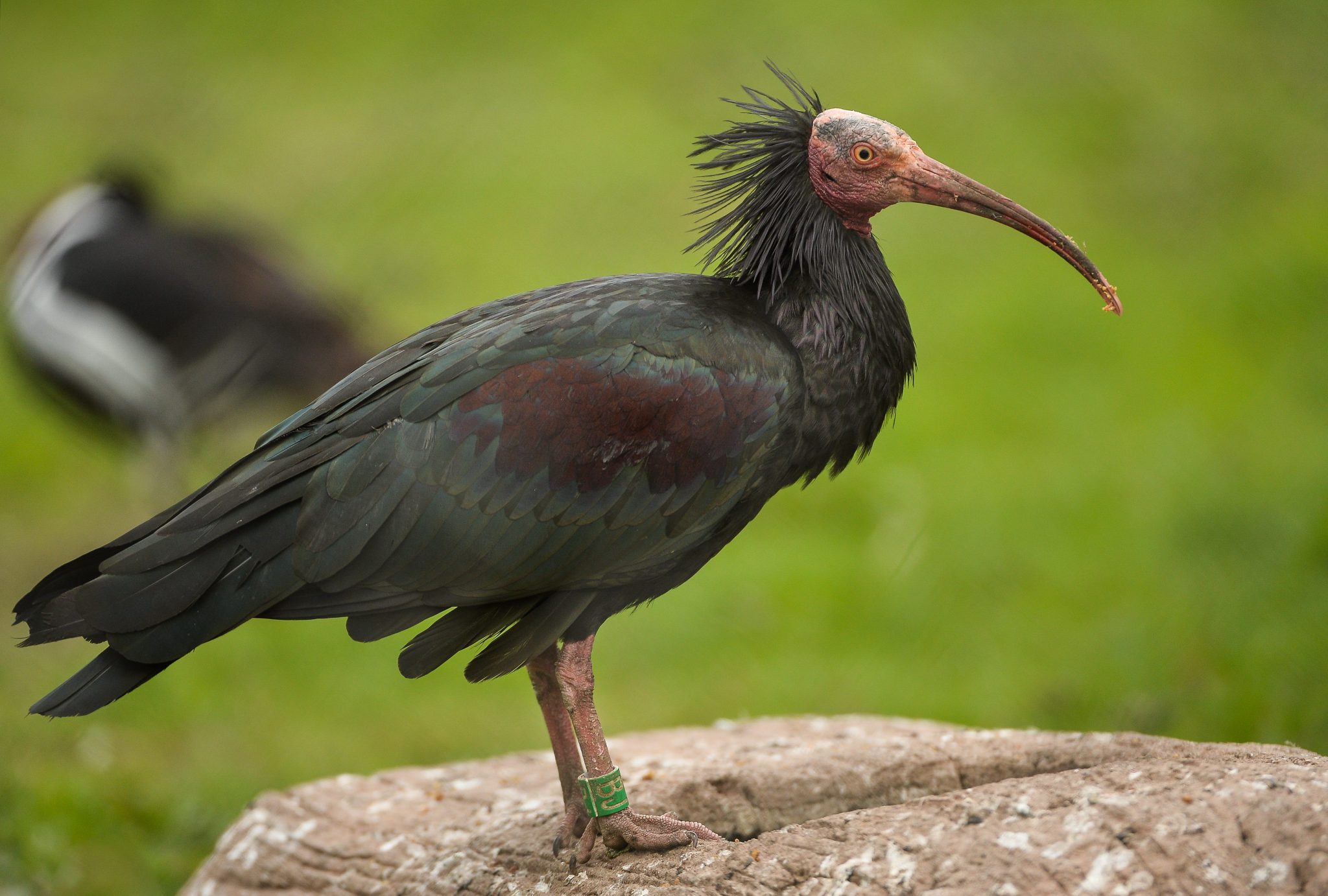
Autumn
Alongside our Go Orange for Orangutans campaign we launched the Palm Oil Challenge and asked for your help to take part in our challenge of making sustainable palm oil the norm. By picking products that contain sustainable palm oil on your weekly shop you’ll be helping to protect the remaining forest homes for animals like the orangutan-tiger-rhino and elephant.
You can Act for Wildlife and help us to continue the vital work we’re doing around the world by making a donation. Go to www.actforwildlife.org.uk/get-involved/donate to donate now. And with Christmas only a couple of weeks away-why not sponsor a project for someone else as a unique gift? Perfect for any last minute presents!
We’re looking forward to 2016!.
The other week we introduced you to some of our Living with Tigers project team and their roles in helping to protect tiger populations in Nepal. In our next post we’d like to give you an idea of the problems the local communities we’ll be working closely with are facing; showing just how vital our work is.
In the last 20 years the population in the Terai, Nepal, has increased by 81% to over seven million people. This has led to habitat loss and fragmentation, but despite this the area is viewed as one of the worlds’ best remaining tiger habitats. Chitwan National Park and Bardia National Park are home to Nepal’s two largest tiger populations – it is estimated that there are around 120 in Chitwan and 50 in Bardia.
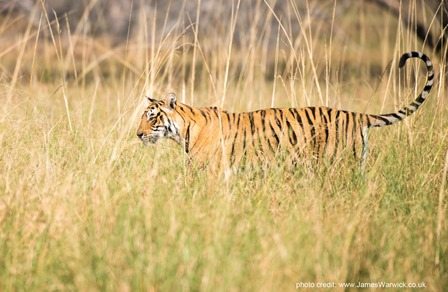
We’re working with the communities affected by tiger presence; the villages located around the edges of these two National Parks. The livelihoods of these villagers are closely linked to forests with the majority depending on its natural resources for income. People have to enter the forests to collect resources or graze their livestock and by doing so are at risk from tiger attacks.
Across the Terai lowlands, effective conservation action has resulted in an increase in tiger populations; while this is great news, more tigers need more space and as a result are venturing into villages and killing livestock and, too often, people! Local villagers then retaliate through resentment and fear by hunting the tigers. This is cancelling out the hard work of those who have successfully protected tigers from poachers.
We’re currently carrying out phase one of our tiger project; conducting some in-depth research into the major local threats to tigers and the needs, cultures and underlying socio-economic pressures which influence community members’ behaviours. The results from this research will help us to focus on changing specific individual and collective behaviours which threaten tigers.
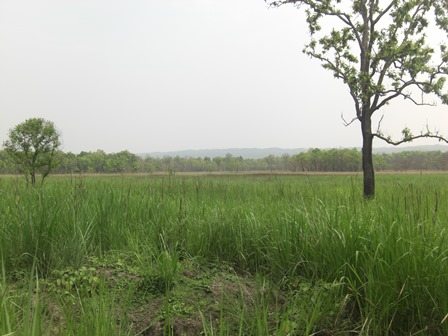
Ayodhyapuri, a village located right on the edge of Chitwan National Park, is one of the focal villages our project will be working with. It is surrounded by forest on three of four sides; increasing the risk of encroaching wildlife.
We’ve already spent time carrying out research here, interviewing the local people and building relationships. It’s believed that approximately four tigers live in this area. However, due to the village being surrounded by forest the people that live here are not only at risk from tiger conflict, they’ve also reported conflict with elephants, rhinos and leopards that regularly come into the village for food. And crop damage by wildlife is one of the major forces behind negative attitudes towards conservation by locals.
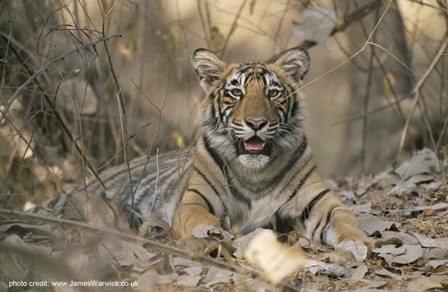
The Chitwan Forest which surrounds Ayodhyapuri is rich in biodiversity and holds around 36 species of tree, 54 species of shrubs and 66 species of herbs – so, as you can imagine, the forest is a great resource for the locals. The majority of casualties resulting from tiger attacks happen when villagers venture into the forest to collect some of these valuable resources. Two men were killed by tigers in 2014 – both had left the village to go into the forest – and in addition to that, two women were recently killed in the forest by a tiger while collecting resources.
On top of this there are high levels of livestock predation incidents; so not only are the local people worried about getting resources from within the forests, they are also at risk of losing their livestock which they also rely on for survival.
Through speaking to the villagers we’ve discovered that the majority would like to move out of the area as they don’t feel safe or that coexistence with wildlife is possible.
And these are the results from just one of the villages we’ve visited. This is happening in many other areas around Chitwan National Park.
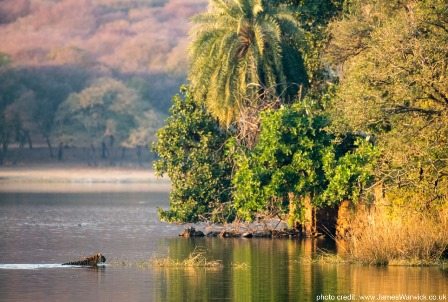
Another village reported that during the past two years four people have been killed by tigers. All of the deaths occurred within Chitwan Forest, except for one case where a tiger killed a person in their house!
Those who have lost family members to tigers are affected not only emotionally but economically as every member of the family is vital for providing resources. And, although not as significant, losing livestock also has an important impact on these families as most rely solely on livestock as a source of income.
So, when you hear what pressures these people are living with – the frustration of losing their only source of income and living in fear that their family could be attacked by tigers – you can understand why they feel the only option they have to protect their livelihood and, more importantly, their lives is by harming or killing tigers.
Our Living with Tiger project will save lives, contribute to reducing poverty and generate new insights into the dynamics of wildlife conflict. We need your help to continue our work; that’s why we’re asking you to support our 2015 Big Give Christmas challenge.
